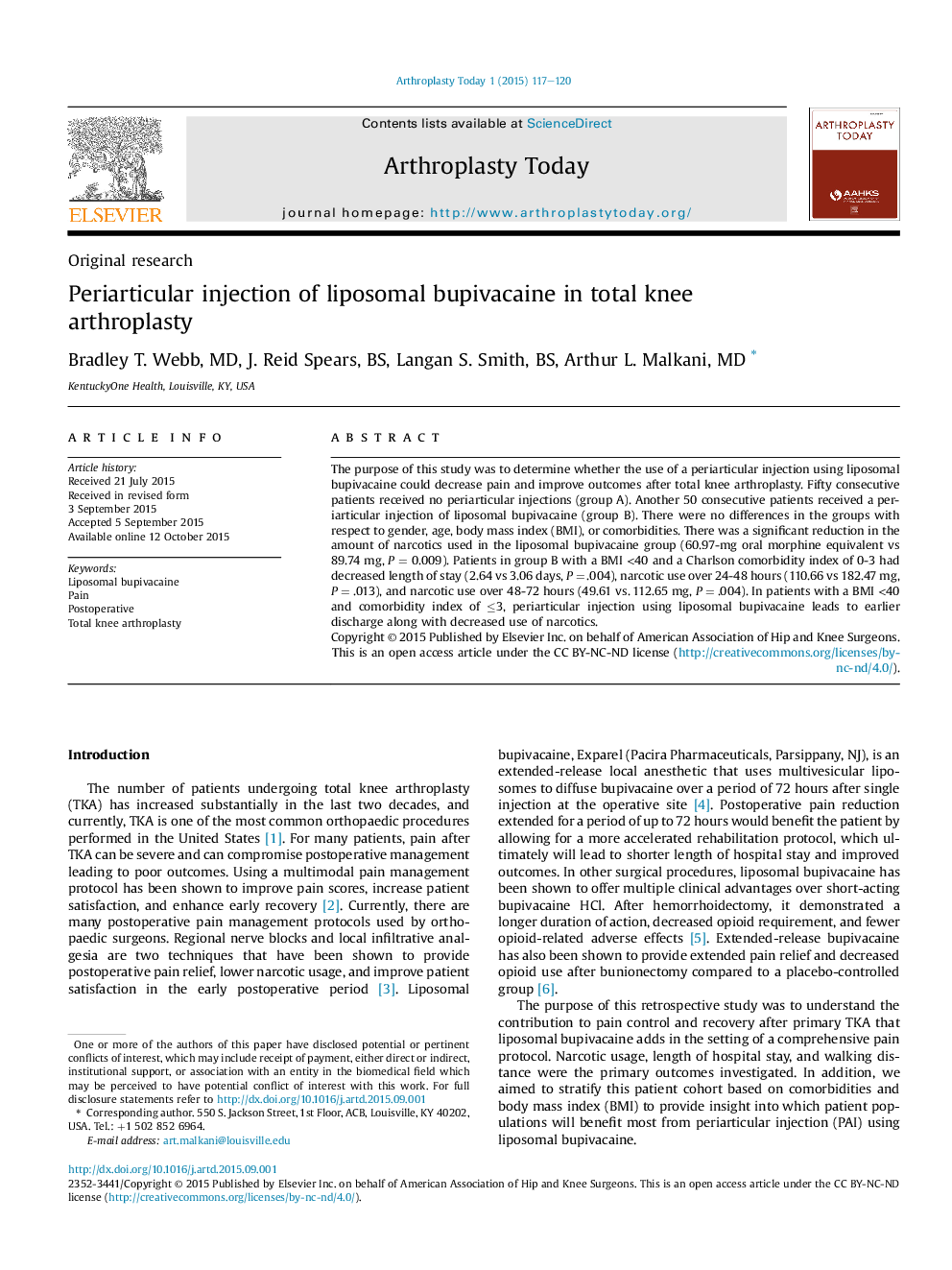| Article ID | Journal | Published Year | Pages | File Type |
|---|---|---|---|---|
| 4041613 | Arthroplasty Today | 2015 | 4 Pages |
The purpose of this study was to determine whether the use of a periarticular injection using liposomal bupivacaine could decrease pain and improve outcomes after total knee arthroplasty. Fifty consecutive patients received no periarticular injections (group A). Another 50 consecutive patients received a periarticular injection of liposomal bupivacaine (group B). There were no differences in the groups with respect to gender, age, body mass index (BMI), or comorbidities. There was a significant reduction in the amount of narcotics used in the liposomal bupivacaine group (60.97-mg oral morphine equivalent vs 89.74 mg, P = 0.009). Patients in group B with a BMI <40 and a Charlson comorbidity index of 0-3 had decreased length of stay (2.64 vs 3.06 days, P = .004), narcotic use over 24-48 hours (110.66 vs 182.47 mg, P = .013), and narcotic use over 48-72 hours (49.61 vs. 112.65 mg, P = .004). In patients with a BMI <40 and comorbidity index of ≤3, periarticular injection using liposomal bupivacaine leads to earlier discharge along with decreased use of narcotics.
